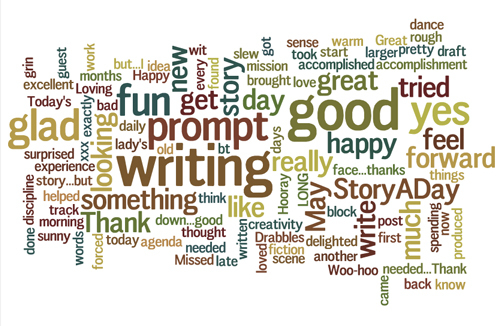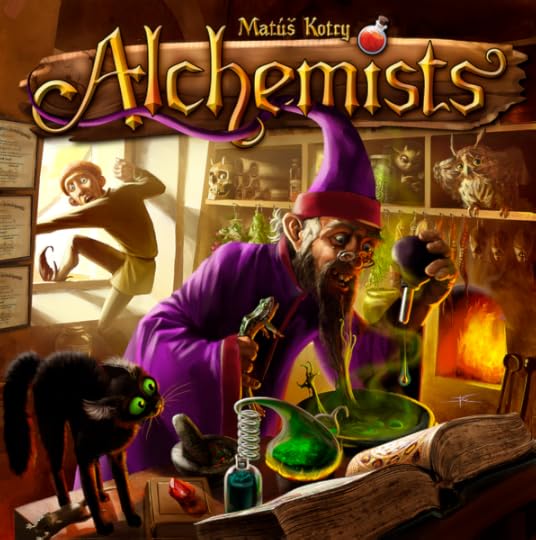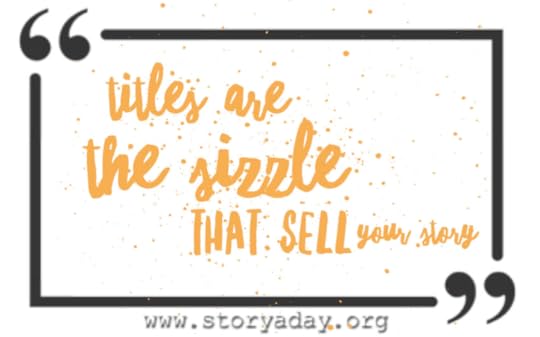Julie Duffy's Blog, page 98
March 6, 2019
[Write On Wednesday] Childhood Trips
This prompt was inspired by Kristen Iskandrian’s short story Good With Boys, which I reviewed in the Reading Room.

The Prompt
Write a story based on a trip you took in childhood
Tips
In Iskandrian’s story, Good With Boys , the author uses the memory of a trip she really took as a child, to build a story around a fiesty, passionate character whose personality is never in doubt from the first words of the story.In your opening, try to pull us into the character’s head, whether or not you’re writing in 1st person. Let us know, in the first paragraph, what it is that they desire.Think about how children experience the world. They don’t think and analyse the way we do as adults. It’s a rush of sensations, of emotions, of vivid impressions: smells, colors, physicality. We get jostled as children, people don’t see us, don’t give us space. We taste things and smell things and have to name experiences, all for the first time. We don’t yet have nostalgia to rely on in our processing of events. How can you get that across to the reader?Don’t worry about faithfully reproducing the events of the trip you actually took. In fact, because this is a short story, you don’t even have to make it realistic, as long as there is truth at the heart of the story. So if you want your character to fly, they can fly, as long as it makes sense within the story. (Remember, short story readers are much more tolerant of metaphor and magical realism and riddles, than novel readers).Consider opening with a strong visual image and ending with a strong visual image. If you can tie them together somehow, that’s feels great to a reader. (Note: Good With Boys does not do this, so it’s not a rule you must follow. It’s just a suggestion, to make your first draft easier on yourself!)Try to introduce a question, even a small one, in the first few lines, to draw us in and keep us reading until you reach your story’s main point or theme. Don’t be afraid to state the theme boldly, like a fairytale’s moral, somewhere near the start.Think about how you want your character or their world to change between the opening lines and the end. How will you illustrate that change in your last paragraph?Or, don’t worry about any of this stuff, and just write a rambling, throw-it-at-the-wall-and-see-what-sticks first draft! Write until you reach the end of the story. How do you know you’ve reached the end of the story? Something has changed; your character or your character’s situation. You’ve made one single thing different. That’s all you need for a short story. Don’t worry about getting it all right on the first draft. Just enjoy yourself.
Leave a comment letting us know what you wrote about or linking to your story if you’ve posted it somewhere on line.
If you share you story somewhere (and here’s why you might not want to) post a link here so we can come and read it.
Did you write today? How did you get on? Who did you write about? Leave a comment!




March 5, 2019
[Reading Room] Good With Boys by Kristen Iskandrian
This story captures the intensity of pre-teen life in all its aching glory and vibrating physicality. If you’re looking for a story that’s an example of how to create a strong voice for your first-person character, read this one!
The Opening
I was going to sleep in a museum—with any luck, next to Asau Abraham, a boy so gorgeously Jewish he held the entire Old Testament in his name, in the perfect contours of his face. I had this theory about boys, that if they just got close enough to me, and sort of focused in, they would forget about the obvious deterrents, the glasses, the frizzy hair, the underdeveloped body. I was zany, I really went for it, I knew all the good dick jokes. Everyone talks about personality like it’s a bad thing but the fact is, without one, you’ve got nowhere to go but ugly.
It’s the beautiful people, isn’t it, who most often wind up dead or alone?
Kristen Iskandrian,
Look at how much we learn in this opening. The use of the sleepover in a museum and the word ‘boy’ tells us this is probably a contemporary, realistic story told from the perspective of a school child.
“I had this theory about boys” strongly indicates our main character is female, as does ‘underdeveloped body’. (It still could be a boy, but to me this all read like a girl.)
By the end of this opening we know that this is going to be a story about desire, longing and fears. Yes, it’s about a schoolgirl’s relatively chaste desire to get close to a particular boy in the exciting, transgressive overnight setting, but it’s about deeper issues too.
We also have a question that, hopefully, piques our interest: will she get to sleep near Esau? It seems unlikely, knowing school rules the way we do, but it’s enough of a mystery to pull us into the story, to make us give it a chance to charm us.
The Plot Thickens
We know that our character, Jill, wants to sleep next to the object of her affections. By the third paragraph, the author has introduced us to a major obstacle to this goal: Esau’s mother is one of the chaperones.
Jill, in a lovely display of character, declares that this is not necessarily a dealbreaker, and suggests a way it could actually work to her advantage. She wins us to her side with her can-do spirit.
Iskandrian loads up the story with observations about life as an elementary schooler–the seats on the bus, the Cheeto dust ‘like pollen’, the irresistible lure of the polished rocks in the museum gift store—but sprinkles them through the story, reminding us of our protagonist’s age. This works well because Jill has some thoughts, feelings and vocabulary that seem pretty precocious. By keeping her emotional responses to her surroundings those of a younger child, Iskandrian keeps us believing in Jill.
And before too long she gives us a deeper desire for Jill. Not only does she want to be with Esau, she has something she fears too:
I just loved boys so much, it was a sickness, it was a secret. I had to pretend I didn’t love them as much as I actually did. I didn’t want to be boy crazy. Once boy craziness becomes your signifier you can’t be taken seriously. Your art would be ignored. I worked so hard on mine…
Kristen Iskandrian, Good With Boys
The meat of the story, the action, follows Jill through the night as she pursues her desire. I won’t spoil the story, but I will say the author chooses just two incidents to illustrate Jill’s journey, and the story stays short and vivid, and always resolutely in Jill’s personality-packed thoughts.
The Ending
The story ends the morning after the sleepover, as the children exit the museum and assemble for an activity outdoors.
Jill has learned something. She has changed. She is a different girl than the one who entered the museum.
And yet, the author leaves us with a beautiful visual image that allows us also to see a glimpse of the Jill from earlier parts of the story. She has learned something, and she has changed, but I was reassured by the hint that she still the same person: moved by beauty and unable to give up on herself.
Read the story in Best American Short Stories 2018
Read an excerpt in ZYZZYVA No. 109




March 2, 2019
125 – Goals vs. Reality
Setting writing goals is one thing. Living with them, quite another.
This month’s theme at StoryADay is Goals Vs. Reality.
LINKS:
Your invitation to the March Hangout: https://stada.me/319hang
Breaking Writers’ Block ebook: https://amzn.to/2Xq13My
The YouTube version of this podcast: https://youtu.be/QNfeGG6hsPA
It’s another new episode of the StoryADay Podcast




March 1, 2019
SWAGr for March 2019
Post your goals for this month and let us know how you got on with last month’s goals.

Leave a comment below telling us how you got on last month, and what you plan to do next month, then check back in on the first of each month, to see how everyone’s doing.
(It doesn’t have to be fiction. Feel free to use this group to push you in whatever creative direction you need.)
Did you live up to your commitment from last month? Don’t remember what you promised to do? Check out the comments from last month.
And don’t forget to celebrate with/encourage your fellow SWAGr-ers on their progress!
Download your SWAGr Tracking Sheet now, to keep track of your commitments this month
****
Examples of Goals Set By SWAGr-ers in previous months
Write a story a day in May – everyone!Revise at least 10 short stories – IraideWrite two short stories. – JamiAttend one writers’ conference – JulieWrite fable for WordFactory competition – SonyaRe-read the backstory pieces I wrote in May and see if I can use them within my novel – MoniqueResearch the market – JamiFocus on my serial – Maureen
So, what will you accomplish this month? Leave your comment below (use the drop-down option to subscribe to the comments and receive lovely, encouraging notifications from fellow StADa SWAGr-ers!)
(Next check-in, 1st of the month. Tell your friends!)




February 26, 2019
[Write On Wednesday] Alchemists
We’re all alchemists, here, turning an abundant resource (ideas) into something much more valuable (stories) and today i want you to include some alchemy in your story

The Prompt
Write a flash fiction story in which a character transforms something seemingly worthless into something valuable
Tips
Remember, flash fiction is anything up to 1000 words, which sounds like a lot, but really isn’t. Do some planning before you write, to help you keep the word count down. See this post for a simple short story formula to help you plan.“Something worthless” and “something valuable” are intentionally vague terms here. You might choose to have your character transform old posessions into new cash via the magic of eBay (which won’t surprise anyone, so focus on letting us know why the change matters so much to your character) .If you character is an jeweler, you could use the act of transforming a lump of gold into a beautiful brooch as the metaphor for something deeper going on in that character’s life.If your character is not transmuting physical objects, they might transform something else: a hobby into a career; a friend into a lover; an idea into a business.Try to capture some of the wonder inherent in the word ‘alchemy’ in your story. Allow us to feeeeeel the change that is happening and why it matters.If you start to have a lot of fun with this and don’t want to write a flash story, run with it. February’s almost over anyway…
If you share you story somewhere (and here’s why you might not want to) post a link here so we can come and read it.
Did you write today? How did you get on? Who did you write about? Leave a comment!




February 21, 2019
What I Know About Flash Fiction
Since February is all about Flash Fiction around here, I’ve put together these resources for you, on the joyful thing that is Flash Fiction.
Oh, and if you haven’t read the Rose Metal Press Field Guide To Flash Fiction , you should.

Flash Fiction is fabulous way to:
Tighten up your writing in longer projectsPractice writing quick stories, for StoryADay MayRediscover the joy of finishing stories
Here are some Flash Fiction Essentials to get you started writing in this demanding, but fun form.
| Reading Flash | 4 Ways To Think About Flash | Podcasts About Flash | Further Reading From Around The Web |
Read Some Flash Fiction
It’s always the most annoying piece of advice on the ‘writer’s guidelines’ page for any publication, but it is also the most true. You must be familiar with the form before you can write it. Even if you want to be original, you must know the rules before you can break them.
Luckily, studying Flash Fiction takes less time than studying novels or movies, so set aside some time, immerse yourself in a ton of stories, and see what speaks to you.
If you have a favorite genre to read/write, find some stories in that genre and read as many as you can. Let them percolate for a few days.
For the stories or lines that stayed with you, go back and try to work out how the author got inside your brain. What techniques did they use? What pacing? What word choices? What surprised you?
For the stories that left you cold, what did the author NOT do? What can you learn from that?
You don’t have to copy any one writer or style, but by dissecting the work of your favorites, you gain some tools to try out when appropriate.
Suggested Reading
For Literary Fiction try Electric Lit’s Archive for Commuters or this HuffPo list of 15 storiesFor Romance try Flash Fiction Online’s Romance section or Flash Fiction Library’s Romance archiveFor Science Fiction try Daily Science Fiction, 365Tomorrows, Flash Fiction Online’s Sci-Fi Archive, Tor.comFor Fantasy try Every Day Fiction’s Fantasy archive, Tor.com, Fantasy Scroll Magazine, The ArcanistFor Dystopian Fiction try this list from BookRiotFor Mystery Flash, try FlashBangMysteries.com, Quick Mystery, Short Fiction Break’s Thriller Archive, Flash Fiction Library’s Mystery Archive
Four Ways To Think About Flash Fiction
Here are four Flash Fiction writing prompts for you
(I should probably stop calling the writing prompts that, because really they are mini-classes. But I keep calling them writing prompts anyway…)
Make It Flash encouraged you to write a flash fiction story with a literal flash in it and gave you some advice on how to do that. Bonus points to Jacqueline, Mark who shared their flash stories, and to Tracy who left a comment, telling us about what working on flash did for her novel-writing.
Specific To Universal highlighted some ways to make a story more than a self-absorbed tale of Something That Happened, and instead, resonate with the reader.
Terrific Titles talked about the importance of titles in short fiction (especially in the shortest forms) and gave you some tips for making your titles become the sizzle that sells your story.
Crafting Great Openings & Endings for Flash gave you tips on how to make your stories start strong and end with a punch. People’s perception of events is often shaped in the last few moments, and stories are no different. It doesn’t really matter how well a story is written if it leaves the reader flat at the end. Let’s learn how to avoid that!
Flash Fiction Podcasts
You can listen to two podcasts this month, all about flash fiction.
Episode 95 – What Is Flash Fiction and Why You Should Be Writing It in which I get excited about flash fiction and tell you how to start.
Episode 96 – How To Make It Flash, publishing Saturday, Feb 24, in which I get into the details of how to write really good, satisfying tiny tales.
You can subscribe to the podcast here,
or search for “StoryADay” in any podcast app.
Further Reading From Around The Web
Here’s some recommended reading from around the web:
How To Write Flash Fiction – an excellent, three-part, illustrated guide, with no-fluff, from Wikihow.
Expert Tips For Writing The Best Flash Fiction – a round up of most of the advice you can find on the web, about flash. A good summary article by the improbably-named Jack Smith (jk), The Writer
Naming The Baby – How to pick a good title for your story, by Bruce Holland Rogers, Flash Fiction Online
Choosing The Right Name for Your Story – Another take on how to pick a title, by John Floyd, Writing-World.com

Photo credit: Kevin J. Duffy




February 20, 2019
[Write On Wednesday] Time’s Up
This month’s focus is on Flash Fiction. Flash isn’t just short, it is urgent. And so is today’s prompt

The Prompt
Time’s Up
Tips
Stories are always better 1 when there is a ticking clock. So make sure to insert one in this story. It can be a literal ticking clock (think: bomb disposal squad, or Dustin Hoffman racing to the church in The Graduate), or more of a subtle ticking clock (think: Marty McFly has to get his mother to fall in love with his farther before she falls for “Calvin Klein”.)
Brainstorm a few ideas for this story, thinking about a character and something that matters to them. A story with a ticking clock is likely to have high stakes but remember that ‘high stakes’ can mean anything as long as it really-really-really matters to your character. It doesn’t have to be life and death. It could be ‘winning the cupcake baking competition because her mother always told her she was a loser, so she never took part in anything, but now she has decided to compete because she’s trying to become her own person’. In this scenario the stakes are pretty darned high, even though the action of the story is kind of silly. The stakes (staying under her mother’s thumb or becoming her own person) are hugely important.
Tell us why your character cares so much about the stakes at this moment. What has changed for them? It could be external (Marty is transported back in time and needs to fix things) or internal (our cupcake baker has met a new friend who treats her well and she realizes she wants to be more than her mother’s version of herself).
This is flash fiction. You have 1000 words. It’s not much. Try to work all the information about stakes and ‘why it matters now’ into the story organically (perhaps in dialogue).
If you do include dialogue, save words by making your character’s voices distinctive, so you don’t have to add “Flo said” and “Jamie said”.
Make the dialogue active, “Dammit!” is a lot more effective than “‘I’m not happy about this,’ Flo said, angrily”. Plus, it saves seven words!
Remember that you can speed up and slow down the pace of the story by showing or telling.
If you want to rush us from one location to another, it’s fine to ‘tell’, then switch back to ‘showing’: They raced to the firehouse together. Diving out the the car Flo shouted instructions…
If you want to slow down the action and ratchet up the tension, use more ‘showing’: The smell of hot tarmac filled Flo’s senses as they crept along behind Sunday drivers and holiday makers in giant RVs. Jamie’s index finger drummed on the wheel. Flo craned her neck, to see the firehouse. She could have sworn it was getting further away.
If you share you story somewhere (and here’s why you might not want to) post a link here so we can come and read it.
Did you write today? How did you get on? Who did you write about? Leave a comment!
Photo credit: Dineshraj Goomany




February 16, 2019
124 – Being A Writer
What kind of writer are you? What kind of culture do you want to create? What kind of writing life are you aiming for?
In this episode I ponder these questions and talk a little about this month’s theme of Flash Fiction.
And I invite you to share what inspires you, right now: https://stada.me/124
:LINKS:
Seth Godin’s The Big Sort https://stada.me/g-bigsort
Chuck Wending’s blog post about writers and day jobs https://stada.me/w-dayjob
Story Review: Joan of Arc Sits Naked In Her Dorm Room https://stada.me/rr-joan
More short stories:
And You Thought Your Last Breakup Was Bad: Five love stories by Matt Leibel https://stada.me/leibel
Seven Stories by Alex Epstein https://stada.me/epstein
Sh*t Boyfriends, stories by Kathy Fish and Dorothy Bendel https://stada.me/valentine
:CREDITS:
Main title music by Alan McPike: https://www.standardstrax.com/
Incidental music by Rebecca Reads www.fiverr.com/rebecca_reads
It’s another new episode of the StoryADay Podcast




February 12, 2019
[Write on Wednesday]Anachrony
This week’s prompt was inspired by the flash fiction story Joan of Arc Sits Naked In Her Dorm Room by Rachel Engelman

Photo by: schizoform cc by 2.0
The Prompt
Write a 750 word story featuring a character from history or mythology, but place them in a different era
Tips
Choose a character you know a little about, so you don’t have to do much research.Feel free to take HUGE liberties with the character. Pick one aspect of their story/character to keep the same, but reinvent them however you wish. Think about what it might have been like to live with someone who is destined to become a legend. Really. Day to day living with Vincent Van Gogh? No picnic. (Well, maybe a few picnics, but certainly not an easy life.)By wresting the character out of their own place and time, you have the opportunity to make them seem more real to us, the readers. What challenges would be new for them? What problems would remain the same? You can acknowledge the fact that they are out of time (Leonardo Da Vinci weeping when he sees a new chopper for the first time) or treat them, as Engelman did with Joan of Arc, as if they belonged there, but still have some of the same qualities that marked them for greatness in the ‘real’ story. For example, Joan is not perplexed that she is at a modern day college. But she still has her mystical relationship with God and a sense of mission.Try to pack as much as you an into the first couple of lines (and yes, you can revise these). Tell us where, who, and what, all in those two lines. Give us a sense of the tone of the story. You only have 750 words. If you share you story somewhere (and here’s why you might not want to) post a link here so we can come and read it.
Did you write today? How did you get on? Who did you write about? Leave a comment!




[Reading Room] Joan of Arc Sits Naked In Her Dorm Room by Rachel Engelman
This story won the 2018 2018 Stella Kupferberg Memorial Short Story Prize and was performed as part of the Selected Shorts series at Symphony Space in NYC. (Be still my heart. Can you imagine?!)

I love stories like this. It’s an excellent example of what short stories can do.
There is no need to explain how Joan of Arc (and it does seem like it is the Joan of Arc) is somehow inhabiting a modern American university or college. In a short story, you can trust your readers to come along for the ride, no matter how surreal, as long as everything makes sense within the story world you create.
And in this story, it does.
Engleman sets up a scenario where Joan is a misfit (and wouldn’t she be?), but the story doesn’t stay there.
The Opening
Joan of Arc sits in her dorm on a Saturday night. Joan of Arc is always home on Saturday nights. She does not go out for pizza or beers, or to the movies, or even the theatre, though she would probably enjoy the theatre, for Joan possesses a theatrical heart. When she speaks in class, she thrusts out her chest and focuses her gaze high in the air, as if on some floating orb of light. Though her answers are often wrong. The teacher feels badly having to correct her, though in all consciousness, he cannot show favoritism — not even for spirited and stubborn girls with charmingly ugly haircuts.
Rachel Engelman
Isn’t that great?
In the first two sentences Engelman has shown us what this story is going to be: a little surreal, grounded in a world we know well, and featuring a character who has a problem we can empathize with: she’s lonely, out of place.
The rest of the paragraph expands on these ideas, grounding the reader in the story:
We don’t know for sure that she isn’t invited out, but the implication is that she is a bit of a misguided misfit (“even though her answers are often wrong”)The examples of things she does not do ground us in the story’s place: yes, this really is a contemporary college lifeIt reinforces that yes, this is the real Joan of Arc (“spirited and stubborn girls with charmingly ugly haircuts”)
All of this makes the reader feel safe. We know they author’s got a handle on this story and they’ll be taking us somewhere, probably somewhere interesting.
The Plot Thickens
The middle of this story complicates Joan’s life by introducing her roommate’s boyfriend, a guy she is obviously attracted to.
This is not the Joan of myth: saintly, aloof, dedicated to her mission. This is Joan-as-a-real-girl. We do get to see a hint of they mythical, spiritual Joan towards the end, but for now, we are just hanging out with a misfit college student, and who can’t relate to that?
Final Thoughts
Towards the end of this 750 word story, Engelman gives us a hint of the mythical, spiritual Joan, with her strong relationship with God. Perhaps it gives us a glimpse into the complications of being a Chosen One.
It moves in tone from the prosaic “beer and pizza” of the opening into a more poetic reflection on her life. Even the syntax reflects dreamlike state Joan invokes on her Saturday nights alone.
The ending isn’t an ending int he way you’d expect a novel to end. Nothing is tidied up and put away. Rather, the reader experiences Joan’s existence through an emotional response to the words. We have come to know Joan and what it might be like to be her, just for a moment.
This is what I love so much about short fiction. Freed from the shackles of needing to follow a particular narrative structure (or make complete sense), short stories are at liberty to plunge their bony fingers deep into our hearts and tug.
Read the story online here. Then, leave a comment below, sharing your reactions to the story.
Enter this year’s Stella Kupferberg Memorial Short Story Prize here. Deadline: March 1, 2019







